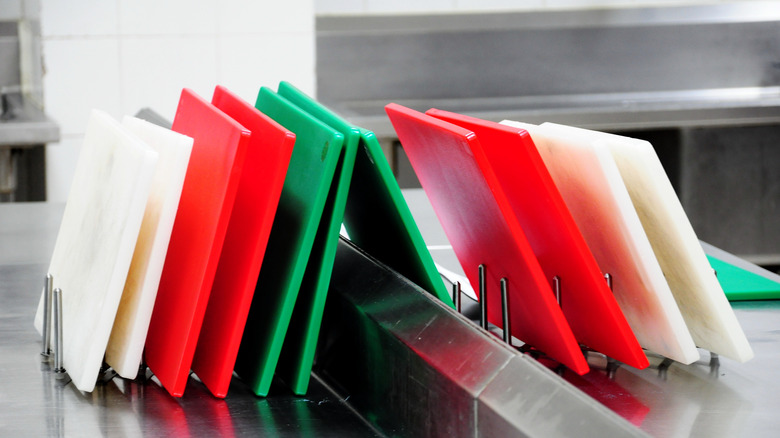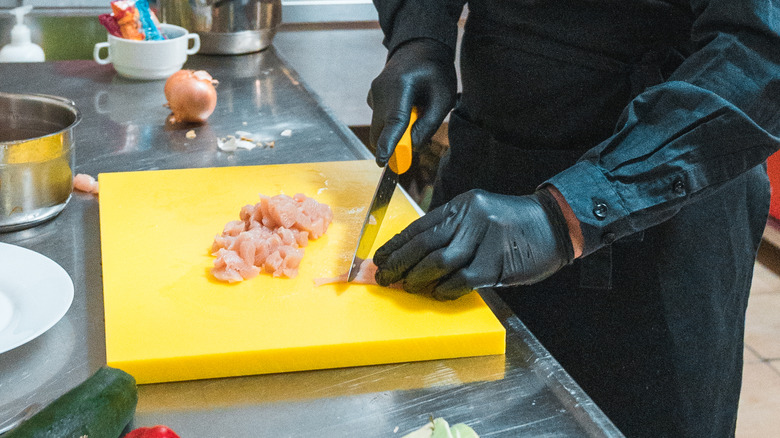The Case For Rubber Cutting Boards
A cutting board is a tool every kitchen should have. They come in many styles and sizes, but the most critical aspect is what they're made from. Ultimately, one material stands above the rest — rubber.
Rubber is among the most durable materials, and it will last for many meals to come. It's also one of the softest materials for cutting boards. This makes it easier on your knives, keeping them sharper over time. Rubber cutting boards are also easy to care for. Most only need a simple wash with soap and water, and there's no need to spend time oiling a rubber cutting board, which is the case with most high-end wooden models.
Another critical advantage is that rubber is non-porous. That's important when it comes to food safety and hygiene. With a rubber cutting board, there's no need to worry about potentially dangerous germs that can linger inside the tiny holes in plastic or wooden cutting boards.
Pricier and less attractive — but longer-lasting
Despite their many benefits, rubber cutting boards aren't perfect. They're typically more expensive than many plastic or softwood options. However, rubber's durability generally outlasts many cheaper alternatives. Rubber cutting boards are also designed with a more utilitarian look that belies their status as a workhorse of professional kitchens. That's in stark contrast with the attractive cutting boards made from wood, bamboo, and other materials that serve as both a prep piece and a serving tray.
Ultimately, it's no surprise that a rubber cutting board took the top spot on Mashed's rankings of the best cutting boards. The Parker Asahi model has been called the "gateway into the wonderful world of rubber cutting boards," with the reviewer noting that it's also highly resistant to slipping, another benefit of rubber. So the next time you need an ultra-dependable, professional quality cutting board, look to rubber for an easy upgrade to your kitchen.

